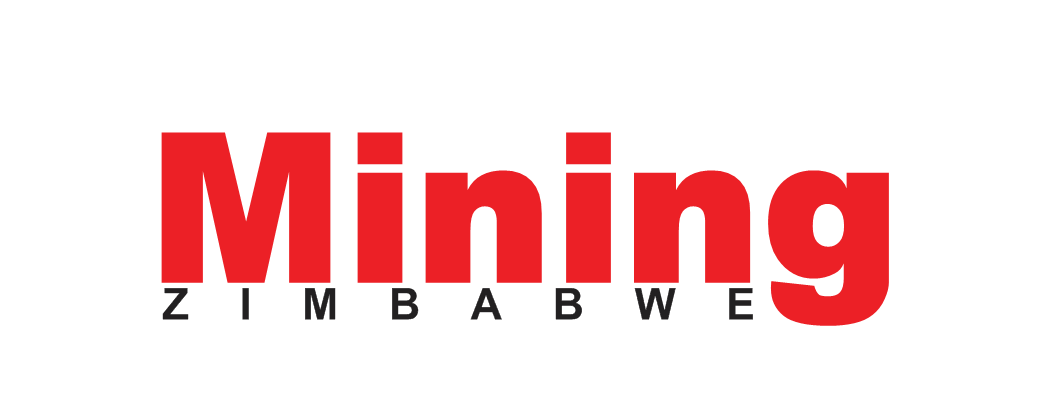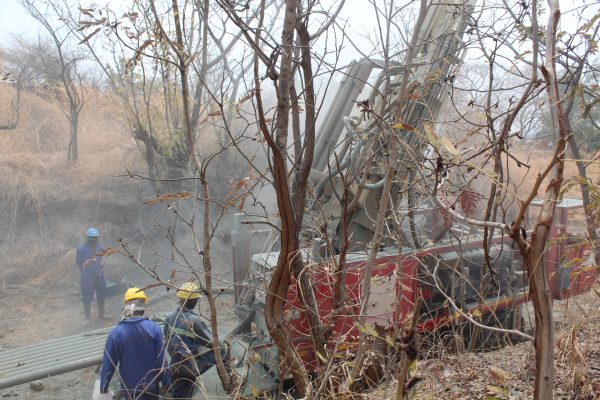Lithium Mining in Zimbabwe on the rise

Lithium Mining in Zimbabwe is on the rise with several projects in the exploration phase forecasted to kick-start production in 2023.
Zimbabwe has the largest lithium reserves in Africa and the fifth-largest deposits worldwide. It has the highest number of Lithium projects under exploration on the continent. Below is a comprehensive list of current lithium mines from the exploration phase to full-scale operations in no particular order.
Kamativi Lithium Mine

Kamativi Mining Company (KMC) is rapidly spearheading its exploration drive to transform the former tin mine into one of the biggest spodumene and Petalite ore body in Zimbabwe.
Mining Zimbabwe visited Kamativi Lithium Mine to assess the progress and witnessed Diamond drill rigs drilling at different locations to delineate the potential deposit.
Between September 2021 and March 2022, Phase-one drilling commenced with 38 holes being drilled to the depth of 2140m. Phase-one drilling focuses on open-cast areas with shallow holes for Open Cast Mining.
Between April 2022 – June 2022, Phase-two drilling commenced and KMC managed to drill 28 holes of 5000m. The drilling was for underground mining and Mineral Processing research is still underway.
Phase-two detailed drilling of 100 holes of around 15000m is being carried out with detailed exploration for underground mining and resource report and feasibility study to be expected after drilling is completed.
To date, 4900m have been drilled from late September 2022 using the 8 rigs on site. Exploration is going to be upscaled by an additional 4 rigs which are expected to be on-site by early November 2022 (bringing the total number of rigs on-site to more than 12 rigs) in mid-November.
The type of lithium dominant at KMC
Preliminary sample results have shown encouraging results for the mine hosting high-grade lithium spodumene, petalite with the mine having the potential to become one of the biggest lithium producers in Africa.
Spodumene is an essential supply of lithium to be used in ceramics, cell phones and car batteries, medicine, Pyroceram and as a fluent substance.
With the rise and popularity of Electric Vehicles (EVs), spodumene has become the most important commodity in the world with nearly all battery producers looking for mines that can supply them uninterruptedly spodumene for the future of the transport sector.
Bikita Minerals
Bikita Lithium Mine is Zimbabwe’s biggest lithium producer and is the home to the world’s largest-known deposit of the metal at around 11 million tonnes.
Bikita Minerals has been an active mining site for around 100 years.
For over 50 years, the mining and extraction of lithium minerals has been at the centre of Bikita Minerals’ activities. Today, Bikita Minerals is the World’s foremost supplier of the lithium mineral Petalite.
China Sinomine Resource Group, which acquired Bikita Minerals will invest US$200 million to build a plant and expand its existing mining operations.
Arcadia lithium mine
Zimbabwe also has upcoming projects with the Arcadia lithium mine expected to start delivering lithium-containing minerals spodumene and petalite next year.
It is anticipated that Arcadia will be producing an average of 212,000 tonnes (t) of 6% spodumene concentrate, 216,000t of petalite concentrate, and 188,000 pounds (lbs) of tantalum per annum from Arcadia. The project is estimated to have a mine life of 12 years.
The project hosts greenstone rock units of Arcturus formation, a member of the Harare Greenstone Belt (HGB). It is housed within a series of stacker, petalite-spodumene bearing pegmatites, with an average thickness of 15m, in the HGB. The pegmatites extend up to 2.5km along strike.
The mineralisation at the Arcadia deposit is predominantly made up of petalite and spodumene, while the secondary minerals are eucryptite, bikitaite, lepidolite, and tantalite
Huayou, one of the world’s major producers of cobalt, last year completed a 422-million-U.S.-dollar purchase of the hard-rock lithium mine from Australia-listed Prospect Resources.
Sabi Star Lithium Mine
Shenzhen-listed Chengxin Lithium Group last year also acquired a 51 per cent interest stake in Sabi Star Lithium Mine in eastern Zimbabwe for 77 million U.S. dollars.
The company, listed on the Shenzhen stock exchange, spent US$76.5 million last September to buy 51% of MaxMind, which held claims.
Sabi Star Mine is expected to produce 1 million tonnes of raw ore and is currently constructing processing infrastructure. The recovery of the lithium will be via the floatation process which will include gravity separation circuits to also recover tantalite. At full operational capacity, the 1 million tonnes of ore will translate to 300 000 tonnes of lithium concentrate and 300 tonnes of tantalite-niobium per year.
The construction of the processing infrastructure will be in the region of US$130 million.
Sabi Star Mine will initially export lithium concentrates to China.
MIRRORPLEX Lithium project
Also promising is the Shamva-based MIRRORPLEX (Pvt) Limited’s lithium project which is currently in the exploration phase.
The project which is postured to become Zimbabwe’s biggest hard rock lithium resource has the potential to grow into a world-class lithium mine with results from 240 Rock Chip samples taken from the exposed Bonnyvale pegmatite body at the Shamva Lithium Project providing high-grade lithium assay results up to 3.13% Li2O and surface sampling at the Loch Ness prospect revealing two more pegmatites containing high Li2O grades up to 4.82% Li2O.
Speculatively sitting on over 6 million tonnes of lithium highest grade ore, Mirrorplex is working on Stage two drilling consisting of reverse circulation to confirm mineralisation beneath Lochness North, South Bonny Vale and Hereford East and West as well as testing for extensions of mineralisation.
Zulu Lithium and Tantalum Project
Another leading project is the Premier African Minerals-owned Zulu Lithium and Tantalum Project near Bulawayo.
Zulu Lithium and Tantalum Project is possibly the largest undeveloped lithium-bearing pegmatite in Zimbabwe, located 80 kilometres from Bulawayo.
In early August, Premier received US$18,1 million from Suzhou TA&A Ultra Clean Technology, as part of the marketing and prepayment agreement, which the two parties entered into in June this year.
Under the agreement, clean technology developer Suzhou TA&A agreed to purchase, in advance, spodumene concentrate six (SC6) worth US$34,6 million from Premier to enable the construction and commissioning of a large-scale pilot plant at the Zulu lithium project.
Step Aside Lithium project
Prospect Resources currently owns a potential high-grade lithium deposit located approximately 8km north of the Arcadia Lithium project, the Step Aside Lithium project.
The prospectivity of this area is confirmed by positive historical regional stream and soil sample geochemistry results. The potential is centred on four mineralised pegmatites that are mapped within a meta-dolerite host rock. These LCT mineralised pegmatites run parallel to each other in a north-south orientation and have dip angles of approximately 40-45˚ to the west.
An early-stage exploration program is underway at Step Aside, with rock chip sampling completed and trenching and drilling activities set to commence in Q3 2022. This work is targeted to determine the potential extent by delineating the thickness and strike length of the sub-surface pegmatite.
According to the company’s half-year financial results for the year ended December 31, 2021, an exploration programme is underway.
Kamativi Lithium project
Following an assignment agreement (Deed of Assignment) Galileo Resources entered with BC Ventures and Cordoba Investments Limited in January this year, the resources firm has the option to acquire a 51 per cent interest in BC Ventures by spending US$1,5 million on exploration. BC Ventures own the lithium project and two gold licences near Bulawayo through its wholly-owned Zimbabwe subsidiary, SinamateIa Investments (Private) Limited.
The Kamativi Lithium Project comprises EPO 1782, covering 520 km2, and lies on the Kamativi Belt directly adjacent to, and along strike from the historic Kamitivi tin-tantalum mine which operated from 1936 to 1994. The Kimativi Mine produced 37,000 tonnes of tin and 3,000 tonnes of tantalum ore from pegmatites, and in 2018 Chimata Gold Corp (Zimbabwe Lithium Company) announced a new JORC (2012) compliant Indicated Mineral Resource of 26Mt @ 0.58% Li2O within the Kamativi mine tailings, confirming that the mine contained significant quantities of lithium.
In June 2022, Galileo announced that it has started exploration works at the Kamativi lithium project.
Lithium discoveries in Zimbabwe
The Ministry of Mines and Mining Development and the Minerals Marketing Corporation of Zimbabwe list Areas of verified Lithium deposits in Zimbabwe are Goromonzi, Mudzi, Buhera, Bikita, Chegutu, Hwange, Harare, Insiza, Rushinga, Mutoko, Mutare and Hwange. However, Lithium continues to be discovered in various areas across the country. So far the mineral has been discovered in areas such as Mberengwa, Fort Rixon, Bindura, and Kadoma cementing the statement by veteran Geologist Mr Kennedy Mtetwa that “Zimbabwe is hamstrung by lack of exploration”.





